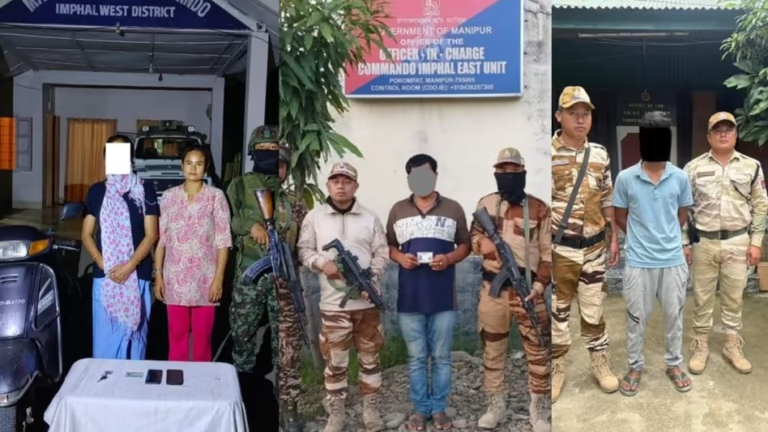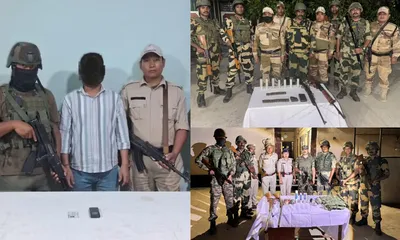Kangpokpi DC Orders Eviction of Encroachments Along NH-02 & NH-37
Quick News Summary
Kangpokpi Deputy Commissioner Mahesh Chaudhari has issued an order directing the removal of all unauthorised structures — including house extensions, shops, sheds and encroachments on footpaths — along National Highway-02 (Imphal–Kohima Road) and National Highway-37 (Imphal–Jiribam Road) in the district. The eviction notice, issued on August 12, sets a deadline of 3:00 pm on August 28 for compliance and warns of demolition and penal action with removal costs to be borne by encroachers. The administration says the move responds to reports from NHIDCL and field officers that illegal structures obstruct traffic and pose safety risks.
Why this order matters — and why you should care
Ever tried walking on a sidewalk only to find it taken over by a tea stall, a pile of sacks or a tin shed? That small frustration is the everyday reality in many towns where the thin strip of public land beside highways slowly gets eaten up by private use. When that happens on NH-02 and NH-37, we’re not just talking convenience — we’re talking congestion, safety hazards, stalled ambulances, and longer supply chains for everything from medicine to vegetables. That’s the heart of Kangpokpi’s latest eviction order. It’s about reclaiming public space so roads can do the job they were built for.
The official nutshell: what the order says (the facts)
Let’s keep this simple and precise:
- The Deputy Commissioner, Mahesh Chaudhari, issued the order on August 12.
- All unauthorised structures — permanent and temporary — along NH-02 and NH-37 in Kangpokpi are to be removed.
- The deadline for voluntary removal is 3:00 pm on August 28.
- If owners don’t comply, the district administration will demolish the encroachments and charge the cost of removal to the encroachers.
- The decision follows reports from the National Highways & Infrastructure Development Corporation Limited (NHIDCL), local field officers, and on-ground observations citing traffic obstruction and safety risks.
These are the load-bearing facts you’ll see in any official follow-up note. If you live or do business near these highways, those dates and conditions matter — they change timelines and decisions overnight.
Why the administration is drawing a line now
You might ask: why act now? Isn’t this a perennial problem? True — encroachment is not new — but a few dynamics explain the timing:
- Safety & Traffic Flow: Highways are built with a Right of Way (ROW) so vehicles can move freely and emergency services can pass. Encroachments narrow that corridor and create chokepoints. The DC’s note explicitly mentions traffic obstruction and hazards reported by NHIDCL and field staff.
- Recent Tensions & Blockades: Kangpokpi and surrounding foothill regions have seen protests, blockades and movement disruptions in recent weeks. Restoring clear highways is part of ensuring essential supplies and emergency access are not hampered. Local reports show economic blockades along NH-2 were a recent flashpoint that affected movement—clearing the ROW is directly tied to preventing future bottlenecks.
- Infrastructure Work & Funding: National highway agencies prefer clear ROWs before starting maintenance or expansion. When NHIDCL flags encroachments, it’s often tied to planned upgrades or safety audits. Clearing encroachments now keeps projects from getting delayed once funds or contractors come in.
So, it’s a mix of safety, continuity and preparation for future infrastructure work. Think of it like pruning an overgrown hedge before storms — necessary maintenance to prevent bigger problems.
What the district must do to avoid turning enforcement into a crisis
A bulldozer rolling at 3 pm on August 28 can cause panic unless the administration plans well. Here’s a practical checklist local authorities should follow — and citizens should expect:
- Advance Notice & Counseling: Official letters, public meetings, and clear notices explaining who is affected and why. Some people genuinely don’t know the legal boundaries. Official outreach helps.
- Relocation Options: For petty vendors, temporary sanctioned vending zones should be identified — a place to shift without losing customers entirely.
- Compensation or Grace Periods: While the order’s firm on demolition and cost recovery, humanitarian exceptions for vulnerable households (elderly, those without alternate shelter) should exist.
- Transparent Valuation: If removal costs are to be charged, the method must be transparent and documented — fairness prevents long-term resentment.
- Follow-up enforcement with community policing: After clearances, ongoing monitoring stops re-encroachment. Community volunteers can help report new infractions.
Done right, the exercise can be a reset that protects both road-users and vulnerable vendors.
FAQs
1) Who issued the eviction order and when is the deadline?
Deputy Commissioner Mahesh Chaudhari issued the order on August 12; encroachers have until 3:00 pm on August 28 to remove unauthorised structures voluntarily, after which the administration will proceed with demolition.
2) Which roads and types of structures are targeted?
The eviction targets encroachments along NH-02 (Imphal–Kohima Road) and NH-37 (Imphal–Jiribam Road), including house extensions, shops, sheds, and obstructive items on footpaths.
3) Will vendors or small shopkeepers be punished without alternatives?
The order allows demolition and recovery of removal costs from encroachers. However, humane enforcement involves providing alternative vending spaces or temporary relief — something civic groups and citizens should actively request from authorities.
4) Why is clearing the ROW urgent now — is it linked to recent blockades?
Yes — recent blockades and road disruptions in the region have highlighted how vital unobstructed highways are for supplies and security. NHIDCL and the district administration flagged encroachments as both a safety hazard and a road-management problem. Clearing ROW supports traffic flow and emergency access.
5) How can I check if my structure falls inside the Right of Way (ROW)?
Contact the local SDM/DC office or NHIDCL field office for maps and GPS coordinates. If you own the land, gather title documents and ask officials for a joint site inspection — early clarification beats surprise demolition


